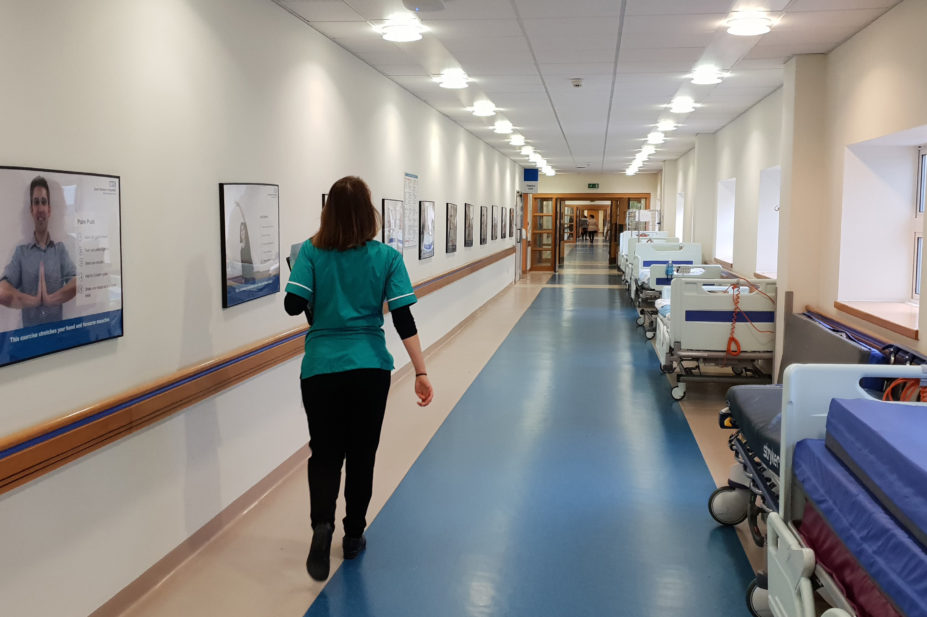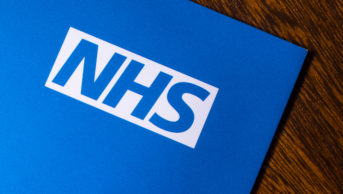
Shutterstock.com
NHS England and NHS Improvement have published the ‘Delivery plan for tackling the COVID-19 backlog of elective care‘, but the plan does not include any specific mention of the role pharmacy can play in elective care recovery.
The plan, published on 8 February 2022, promises “a clear vision for how the NHS will recover and expand elective services over the next three years”.
It includes targets to reduce waiting times for elective care to no more than one year by March 2025 and, by the same deadline, for 95% of patients who need a diagnostic test to receive it within six weeks.
According to the latest available NHS data, more than 6.4 million people are now on the waiting list for elective care, up from 4.4 million before the pandemic, with more than 2.2 million waiting longer than 18 weeks.
The strategy is backed by government plans to allocate an additional £8bn from 2022/2023 to 2024/2025 and aims to expand elective capacity through recruitment of nurses from overseas, use of private providers and introducing community diagnostic centres and dedicated surgical hubs (see Box).
However, the NHS delivery plan does not contain a single mention of pharmacists or pharmacy teams and their role in this strategy, nor were any pharmacy organisations part of the Elective Recovery Engagement Forum, which was involved in drawing up the report. Members of the forum included the British Medical Association and the Royal College of Nursing.
When asked why the plan contained no explicit mention of the role pharmacy can play, a spokesperson for NHS England and NHS Improvement highlighted that the document said: “Recovering elective services is going to require a huge, collective effort from systems and providers.
“This is not just in hospitals but across the entire health and social care system. We will only be successful in delivering these commitments if we are to draw on the collective ingenuity, determination, and resilience of teams across the country.”
However, pharmacy leaders said the plans needed to go further and specifically seek to utilise the expertise of pharmacy teams in primary and secondary care to tackle backlogs in treatment and diagnosis.
Thorrun Govind, chair of the Royal Pharmaceutical Society’s English Pharmacy Board, said in a statement: “As the third-largest health profession, pharmacists have a clear role to play in the effort to clear the elective backlog, as part of the multidisciplinary team.
“We have seen some positive steps around pharmacists supporting urgent care as well earlier diagnosis for conditions such as cardiovascular disease, but this could go further with the right support. With growing numbers of independent prescribers, there’s a clear opportunity to make the most of pharmacy professional practice to deliver high-quality patient care.
“This all needs to be supported by a clear workforce plan, backed by appropriate funding, to recruit, retain and train the staff we need.”
A spokesperson for the Pharmacists’ Defence Association (PDA) said that the health service needed pharmacists expertise to improve discharge from hospital, a key feature of the plans.
They added: “This is just one example of where pharmacists can and do make a significant contribution by improving the patient journey as they move safely between secondary and primary care. We call on policy makers to work with the new chief pharmaceutical officer and pharmacist representative bodies, such as the PDA, around the skills and expertise that pharmacists can bring to the delivery of these plans”.
Ade Williams, superintendent pharmacist at Bedminster Pharmacy, Bristol, said that it was “impossible” to reduce delays in treatment or diagnosis without community pharmacy.
“There is a key shift towards having care delivered for a shorter period of time in acute and secondary care settings, back into primary and community care. If we don’t get community pharmacy involved — especially with urgent referrals for cancer diagnosis — we will fail to address that effectively,” he added.
Box: How NHS England plans to tackle the COVID-19 backlog
The ‘Delivery plan for tackling the COVID-19 backlog of elective care‘ is a three-year plan to tackle the large waiting lists that have built up during the pandemic. It includes the following targets:
- Recruit more than 10,000 overseas nurses and 5,000 healthcare support workers by end of March 2022;
- Accelerate the introduction of new roles, such as anaesthetic associates and first contact practitioners, and expanding advanced clinical practitioners;
- Scale up ‘virtual wards’, set up during the pandemic; invest in technology (such as robotic process automation) to automate patient registration, admission and discharge;
- Review national and local policies on waiting list management and prioritise treatment according to clinical urgency; continue the development of the national Health Inequalities Improvement Dashboard to pinpoint disparities in waiting times based on ethnicity and deprivation; develop an accessible public-facing version of the dashboard;
- Establish a new national network for ‘long waiters’, to give systems across all NHS regions a treatment alternative for patients: including NHS or NHS-funded private sector capacity;
- Increase the number of community diagnostic centres from 40 to 66 by the end of 2021/2022, and to create at least 100 in the community and on the high street over the next three years;
- Expand the number of surgical hubs, to perform high volume low complexity surgery;
- Develop a My Planned Care platform to provide patients and their carers with general information on their elective wait, which will be accessible to patients, family members, carers and clinicians.
Source: ‘Delivery plan for tackling the COVID-19 backlog of elective care‘, NHS England


